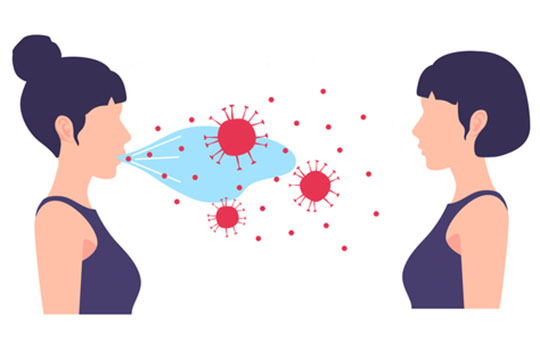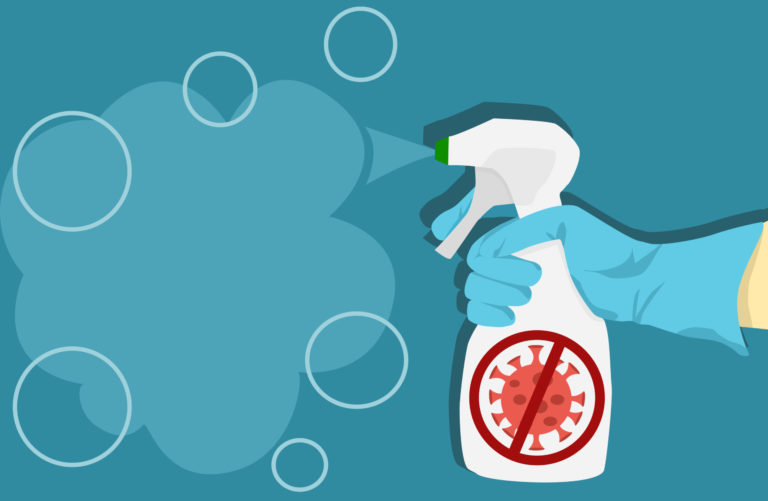
“As a teacher, what can I do to protect myself when heading back to the classroom come September as the novel coronavirus continues spreading? “
With school reopening weeks away, 8 in 1o teachers in Canada are worried about returning to school amid COVID19. The concerns teachers have include the mental health and well-being of their students in relation to the COVID19, and of course their own safety.
In this blog, we explore 5 practical tips for teachers to protect themselve from the pandemic when school reopens.
Properly wear and sanitize PPE

COVID-19 spreads mainly among people who are in close contact with one another (within about 6 feet), so the use of masks and other PPE is particularly important in settings where people are close to each other or where social distancing is difficult to maintain.
According to the Guide to reopening Ontario’s schools, teachers will be provided with medical masks, eye protect such as face shields, and other personal protective equipment. To reduce the potential spread of COVID19, you should know how to properly wear and sanitize PPE.
- Clean your hands with soap and water or hand sanitizer before touching the mask.
- Remove a mask from the box and make sure there are no obvious tears or holes in either side of the mask.
- Determine which side of the mask is the top. The side of the mask that has a stiff bendable edge is the top and is meant to mold to the shape of your nose.
- Determine which side of the mask is the front. The colored side of the mask is usually the front and should face away from you, while the white side touches your face.
- Follow the instructions below for the type of mask you are using.
- Face Mask with Ear loops: Hold the mask by the ear loops. Place a loop around each ear.
- Face Mask with Ties: Bring the mask to your nose level and place the ties over the crown of your head and secure with a bow.
- Face Mask with Bands: Hold the mask in your hand with the nosepiece or top of the mask at fingertips, allowing the headbands to hang freely below hands. Bring the mask to your nose level and pull the top strap over your head so that it rests over the crown of your head. Pull the bottom strap over your head so that it rests at the nape of your neck.
- Mold or pinch the stiff edge to the shape of your nose.
- If using a face mask with ties: Then take the bottom ties, one in each hand, and secure with a bow at the nape of your neck.
- Pull the bottom of the mask over your mouth and chin.
- Clean your hands with soap and water or hand sanitizer before touching the mask.Avoid touching the front of the mask. The front of the mask is contaminated. Only touch the ear loops/ties/band.Follow the instructions below for the type of mask you are using.
- Face Mask with Ear loops: Hold both of the ear loops and gently lift and remove the mask
- Face Mask with Ties: Untie the bottom bow first then untie the top bow and pull the mask away from you as the ties are loosened.
- Face Mask with Bands: Lift the bottom strap over your head first then pull the top strap over your head.
- Throw the mask in the trash. Clean your hands with soap and water or hand sanitizer.
- Disinfect font side of shiedd by using disinfectant wipe or spraying Health Canada-approved disinfectant (recommended)such as Vital Oxide, allow for appropriate dwell time
- Turn shield over, wipe or spray inside of shield and other areas, e.g. strap or ear loops, allow for appropriate dwell time
- If shield is streaked or has a cloudy film, clean mask with soft, damp cloth or use an alcohol pad
- Allow to air dry
- If face shield appears damaged or torn – discard and obtain a replacement
Avoid touching high touch surfaces as much as possible

High-touch surfaces can be risky. COVID-19 spreads primarily through the droplets people emit when they cough, sneeze, talk, sing, or exhale; Those droplets can land on any surfaces nearby or be transferred there by someone touching the surface. Simply touching a contaminated surface won’t give you the coronavirus; however, you can transfer the virus to your mouth, nose, or eyes by touching those sensitive spots, allowing the virus to enter the body and cause infection. Objects that people frequently touch with bare hands are of greater concern than chairs or other surfaces that we’re in contact with through clothing.
High touch points in schools include:
- Door knobs and handles
Stair rails - Classroom desks and chairs
- Lunchroom tables and chairs
- Countertops
- Handrails
- Light switches
- Handles on equipment (e.g., athletic equipment)
- Push-buttons on vending machines and elevators
- Shared toys
- Shared remote controls
- Shared telephones
- Shared desktops
- Shared computer keyboards and mice
To reduce the risk of being exposed to COVID19 in schools, avoid directly touching frequently-touched surfaces with fingertips, or grab a tissue when needed. In addition, sanitizing the objects in the classroom that are frequently touched with effective disinfectant such as Vital Oxide can eliminate the germs and in turn protect yourself and others. Last but not least, clean your hands before touching your smartphone. Mobile phones may not be public surfaces, but studies have shown that they too can harbor bacteria, viruses, and other germs.
Get familiar with COVID-19 protocols
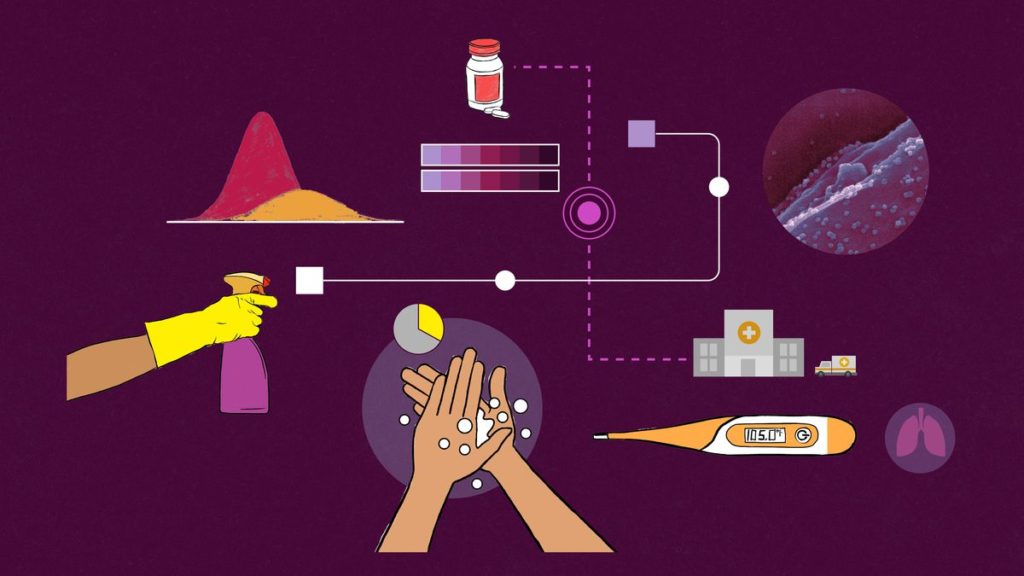
Getting yourself familiar with the guidances for school reopening can help you be more prepared when the new school year comes. By strictly following the protocols, you can protect yourself and others in school from the coronavirus disease.
Before the training being provided to tachers, there are some guidelines for schools to reopen safely during the pandemic that teachers should be aware of.
All staff and students must self-screen every day before attending school. School boards should provide parents with a checklist to perform daily screening of their children before arriving at school and self-assessment tools should be made available to staff to ensure awareness of possible symptoms of COVID-19. Signs should be posted at entrances to the school to remind students, staff, parents/caregivers, and essential visitors of screening requirements. If a student or staff member is experiencing any symptoms of COVID-19, they must stay home from school and should seek testing and appropriate medical attention.
The ministry is also working with public health officials to ensure a supply of public health nurses to assist schools across the province, including assistance with screening of potential cases of COVID-19.
All staff and students who are experiencing new or worsening symptoms consistent with COVID-19 must not attend school and should seek appropriate medical attention as required, including getting tested at a COVID-19 testing centre.
Staff and students feeling sick should remain at home while waiting for test results.
If a symptomatic individual tests positive for COVID-19, they should continue to remain in isolation at home and follow the directions of their local public health unit.
Source: ontario.ca
Check out what a school at Kitchener, Waterloo has done to create and maintain a safe and healthy school environment for students, teachers, and school staff amid the COVID-19 pandamic.
Having small class sizes, adding hand sanitizing stations, increasing sanitization for high touch surfaces, AIM KW is also disinfecting the school facility several times a day by fogging Health Canada authorized disinfectant Vital Oxide to eliminate germs and viruses.
Talk to students about COVID19

To maintain a safe environment when schools reopen, students play a vital role in it. Providing students with accurate information and science-based facts about COVID-19 and engaging them in age appropriate discussion can really help prevent and control the spread of the virus in school.
Here are some suggestions about how teachers can engage students of different ages on preventing and controlling the spread of COVID-19.
- Focus on communicating good health behaviours, such as covering coughs and sneezes with the elbow and washing hands. See more on how to avoid the risk of infection here.
- One of the best ways to keep children safe from coronavirus and other diseases is to simply encourage regular handwashing, for at least 20 seconds. It doesn’t need to be a scary conversation. Sing along with The Wiggles or follow this dance to make learning fun. See more on handwashing here.
- Develop a way to track how children are washing their hands and find ways to reward them for frequent/timely hand washing.
- Use puppets or dolls to demonstrate symptoms (sneezing, coughing, fever), what to do if children feel sick (like if their head hurts, their stomach hurts, or if they feel hot or extra tired), and how to comfort someone who is sick (cultivating empathy and safe caring behaviours).
- When it’s circle time, have children sit farther apart from one another by practicing stretching their arms out or ‘flapping their wings’ – they should keep enough space between each other so that they are not touching their friends.
- Make sure to listen to students’ concerns and answer their questions.
- Emphasize that students can do a lot to keep themselves and others safe. For example, introduce the concept of social distancing, and focus on good health behaviours, such as covering coughs and sneezes with the elbow and washing hands. See more on how to avoid the risk of infection here.
- Remind students that they can share healthy behaviours with their families.
- Encourage students to confront and prevent stigma. Discuss the reactions they may experience around discrimination, and explain that these are normal reactions in emergency situations. Encourage them to express and communicate their feelings, but also explain that fear and stigma make a difficult situation worse. Words matter, and using language that perpetuates existing stereotypes can drive people away from taking the actions they need to protect themselves. Read some do’s and don’ts for how to talk about the coronavirus with children.
- Build students’ agency and have them promote facts about public health.
- Incorporate relevant health education into other subjects. Science can cover the study of viruses, disease transmission and the importance of vaccinations. Social studies can focus on the history of pandemics and the evolution of policies on public health and safety.
- Have students make their own Public Service Announcements through school announcements and poster.
- Media literacy lessons can empower students to be critical thinkers and make them effective communicators and active citizens, which will improve their abilities to detect misinformation.
- Make sure to listen to students’ concerns and answer their questions.
- Emphasize that students can do a lot to keep themselves and others safe. For example, introduce the concept of social distancing, and focus on good health behaviours, such as covering coughs and sneezes with the elbow and washing hands. See more on how to avoid the risk of infection here.
- Remind students that they can share healthy behaviours with their families.
- Encourage students to confront and prevent stigma. Discuss the reactions they may experience around discrimination, and explain that these are normal reactions in emergency situations. Encourage them to express and communicate their feelings, but also explain that fear and stigma make a difficult situation worse. Words matter, and using language that perpetuates existing stereotypes can drive people away from taking the actions they need to protect themselves. Read some do’s and don’ts for how to talk about the coronavirus with children.
- Build students’ agency and have them promote facts about public health.
- Incorporate relevant health education into other subjects. Science can cover the study of viruses, disease transmission and the importance of vaccinations. Social studies can focus on the history of pandemics and the evolution of policies on public health and safety.
- Have students make their own Public Service Announcements through school announcements and poster.
- Media literacy lessons can empower students to be critical thinkers and make them effective communicators and active citizens, which will improve their abilities to detect misinformation.
- Make sure to listen to students’ concerns and answer their questions.
- Emphasize that students can do a lot to keep themselves and others safe. For example, introduce the concept of social distancing, and focus on good health behaviours, such as covering coughs and sneezes with the elbow and washing hands. See more on how to avoid the risk of infection here.
- Encourage students to confront and prevent stigma. Discuss the reactions they may experience around discrimination, and explain that these are normal reactions in emergency situations. Encourage them to express and communicate their feelings, but also explain that fear and stigma make a difficult situation worse. Words matter, and using language that perpetuates existing stereotypes can drive people away from taking the actions they need to protect themselves. Read some do’s and don’ts for how to talk about the coronavirus with children.
- Incorporate relevant health education into other subjects. Science courses can cover the study of viruses, disease transmission and the importance of vaccinations. Social studies can focus on the history of pandemics and their secondary effects and investigate how public policies can promote tolerance and social cohesion.
- Have students make their own Public Service Announcements via social media, radio or even local TV broadcasting.
- Media literacy lessons can empower students to be critical thinkers and make them effective communicators and active citizens, which will improve their abilities to detect misinformation.
Disinfect your personal items after school
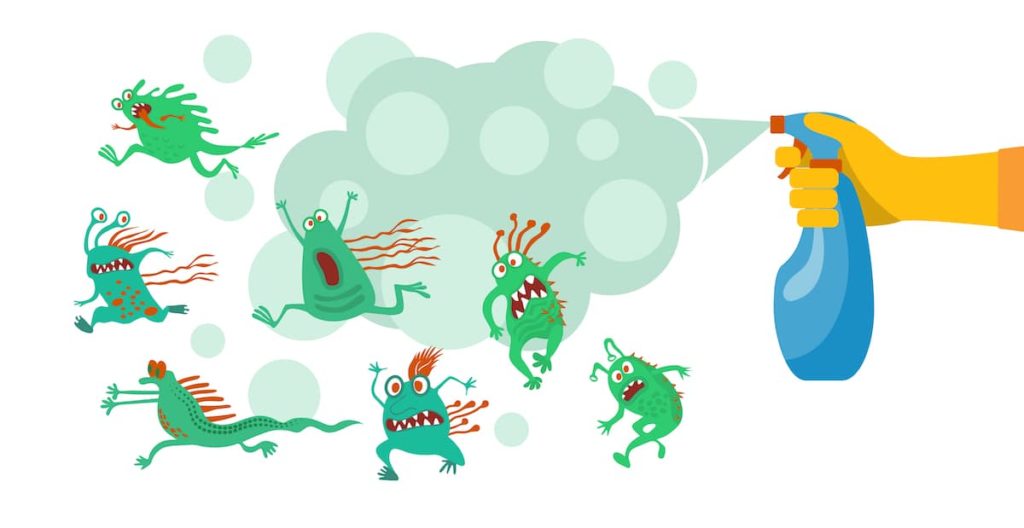
When you come home after work, first disinfect your personal belonging brought to school, such as backpacks, phones, wallets, keys, waterbottles and lunchboxs, to keep bacteria and viruses out of your house. In this unique time, you want to ensure the disinfectant you use is absolutely safe and effective against COVID19.
Vital Oxide is a disinfectant authorized by Health Canada and approved by EPA for use against SARS-CoV-2, the virus that causes COVID-19. It is 100% biodegradable, non-corrosive, non-hazardous, and non-irritating to the skin. No mixing and rinse required before and after use, Vital Oxide is convenient and safe to use – just spray, wipe, or fog right from the bottle.
In terms of the application method, spraying and fogging are recommended as they allow for touchless application to reduce cross-contamination. To effectively sanitize your items, you can use a spray bottle or our junor fogger for better and faster applications.
After applying the disinfectant to the items, put them aside for 10 minutes kill time and the whole disinfection process is complete.
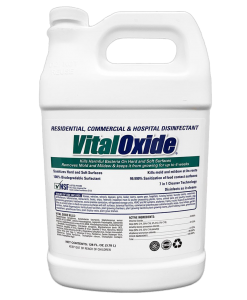
- Health Canada & EPA registered hospital disinfectant
- NSF registered food contact sanitizer
- Mold and mildew killer
- Allergen eliminator
- Odour eliminator
- HVAC & air duct sanitizer
- Soft surface sanitizer

- Better for small applications
- Easy to operate
- Cost effective
- Better cover hard-to-reach areas
- Reduce cross contamination

